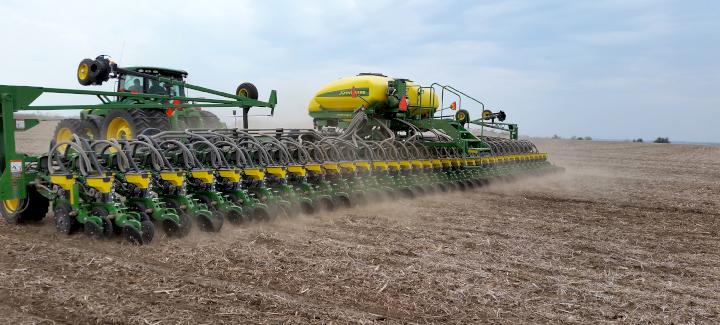
Spring is almost here, and now is the ideal time to prep your equipment for planting. Ensuring your tractor and planter are in good working condition is vital to proper seed placement. And checking your equipment now will allow time to order and install any parts that require replacing. Here are a few tips to lower your risk of equipment breakdown or improper seed to soil contact this planting season.
Check electronics. Always check your electronics and ensure your computer systems are calibrated so that the correct spacing, population and seed depth are set before you hit the field. For variable rate or precision planters, make sure everything is properly programmed and in working order. If your planter doesn’t have this technology, look at your field maps and make adjustments manually. Calibrate all meters and field-mapping software.
Check tires for signs of wear and tear. This step should be a given for any equipment, but it’s particularly important for planters, where gauge wheels ensure the row units are in proper contact with the ground. Also, check the depth and closing wheels. If your wheels look good, don’t forget to clean them as that will also help with proper ground contact. And always check tire pressure before hitting the field.
Check discs and blades. Clean any discs or blades, especially disc openers on your planter. Disc blades should be inspected for chips and cracks as well so that they are in good shape to make seed furrows.
Check chains. All chains, from your box chains to your transmission chains, should be checked and lubricated. If not properly lubricated, chains can kink and cause issues with the equipment’s functionality.
Check meter and planter units. Look for signs of wear and tear, replace any cracked components and properly clean residue off each unit. Meter units that aren’t properly maintained can lead to skips in the field or inaccurate seed depth. Also check your fertilizer units and insecticide boxes for similar issues.
Check seed tubes and row units. Inspect for signs of rust, cracks and loose ends. This step is important for proper seed placement. Ensure row units are properly cleaned of any residue, and check the bushings on the row unit to ensure they aren’t loose.
Check hoses for leaks. Always check your air and hydraulic hoses early in case you need to replace them. Hoses are exposed to the weather elements and run the risk of cracking. Check for leaks and make repairs or replacements where needed.
Check cylinders. Cylinders allow you to fold and unfold your planting equipment. Make sure these work before hitting the road or the field. Test them a few times before your equipment leaves its winter resting place.
Check lights. Planting from sunup to sundown and then some is necessary when the weather allows. As a safety precaution, always ensure the lights on your equipment work so that you can see in the field and others can see you.
Test and test again. Test equipment before you plant to notice last-minute updates that need to be made. You should also make sure the planter is making proper seed furrows at this time and before you add seed to your planter.
For questions related to planting prep and equipment maintenance, contact your local Stine sales rep.
Related Articles
-

Start strong with Stine®: Maximizing your 2026 potential
January 2026 in Agronomy
-

Stine® to offer Syngenta’s Victrato® soybean seed treatment in 2026
December 2025 in Agronomy
-

Use Stine’s XP® seed treatments to prevent early injury to your crops
December 2025 in Agronomy
-

Understanding Stine’s enhanced oil profile soybeans
December 2025 in Agronomy



